Dehumidifiers
Reduce air humidity and moisture levels with a dehumidifier
Unless you're a tropical plant, or Sloth living in the rain forest, you'll probably find very humid environments unpleasant. A humid environment can be a breading ground for mould and bacteria and is generally something to avoid.
Buying a dehumidifier benefits health & wellbeing
Removal of that nasty niff that hits you when you open the door to a damp room isn't the only thing that a dehumidifying unit can help you with.
Damp and mould look nasty, not recommended as some sort of modern art for your wall. They are also bad for your health. Mold and mildew can give off spores which are especially troublesome for asthma and allergy sufferers.
So, for anyone who suffers from an allergy, living in a damp home is a no, no. The same applies to the workplace. The levels of moisture in the air should be monitored and maintained at a safe level.
Classic locations for mould and damp to fester in the home are in badly ventilated bathrooms and kitchens. You can spot a room which doesn't have the best ventilation as condensation may occur on windows and mirrors and a musty smelling odour may be present.
Excess moisture which occurs due to a hot and steamy shower or bubble bath needs somewhere to escape. If an avenue of escape, such as an open window or extractor fan isn't available then water will eventually penetrate walls and floors. This may be the start of your mouldy situation.
This can have other unwanted consequences such as sticking doors and warping of furniture and floor boards. But if you're experiencing those little black furry damp patches, don't panic. A dehumidifier could be the solution to you've been looking for.
What kind of dehumidifiers should you buy?
It's a choice between a desiccant dehumidifier and a condensate compressor dehumidifier. Neither of those involve coconut.
Commonly known as absorption dehumidifiers, desiccant dehumidifiers contain an absorbent material which takes on the excess water, or humidity if you like. That saturated material is then moved to a different location inside the dehumidifying unit and the water removed, often by heating it up.
Refrigeration dehumidifiers can also be referred to as condensate units. These also tend to be the most popular kind. This type of dehumidifier works by drawing in moisture and sending it across a refrigerated area. This moisture is then cleverly evaporated using a fan.
The size of dehumidifier required largely depends on the size of the room you need to treat. But also consider the severity of your damp problem, or humidity producing equipment and items present such as laundry, showers or sweaty humans. It's always better to err on the side of caution and purchase a dehumidifier with a larger capacity than one which may be not quite robust enough for the job in hand.
A handy hint. When your dehumidifier is operation, keep any doors and windows to the room you are treating closed. This will help to enhance the efficiency of your unit.
Look out for the technical specifications which should explain the litres of water per day that the unit is capable of removing. It's important to remember that your unit may require regular emptying and cleaning of the drip tray. This will ensure the unit continues to work at its best and most energy efficient level.
You can check out the energy star rating of your dehumidifier quickly and simply online. This will give you a rough guide to energy consumption and an idea as to how much it will cost to run your unit.
Dehumidifiers for your workplace
Don't confuse a dehumidifier with an air conditioner. An air conditioner works largely in the same way as a dehumidifier. In a nut shell, once an air conditioning unit has removed the warm, moist air from your room, rather than heating it up and evaporating, it's conditioned, cooled and sent back into the room as dry air. Just the job for use during those hot and sticky Summer months.
Dehumidifiers are regularly used in areas of high humidity such as swimming pools. They can also be used to improve air quality in venues such as gyms and leisure centres where a large amount of bodily perspiration may be present. Eeeww.
Did you know, dehumidifiers are also useful at eradicating dust mites, fleas, wood lice and other household critters which particularly enjoy a damp environment. Anyone now itching at the thought?




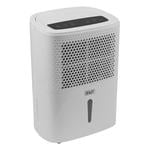
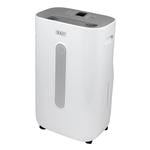
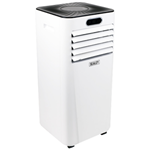
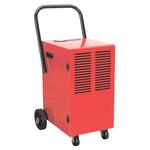
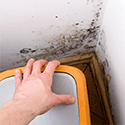 Tackling Damp - The Benefits of Dehumidifiers in The Workplace
Tackling Damp - The Benefits of Dehumidifiers in The Workplace